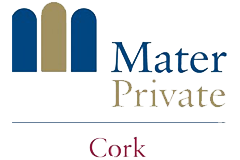From Paper to Digital: How did Mater Private Cork revolutionise their processes?

About our client
The Mater Private Cork is a private hospital which provides specialist services and an A&E department. Their mission is “To provide the highest quality acute healthcare to the patients we are privileged to serve”. Mater Private Hospital Cork are committed to managing and conducting their work activities in such a way as to ensure, so far as is reasonably practicable, the safety, health and welfare of their patients, visitors and employees
Challenges
Mater Private Cork sought to streamline their processes and building on data transparency, with areas such as asset management, incident reporting, and paper-based audits being the primary areas in need of improvement
Enter FlexManager...
Since 2014 the Mater Private Cork have been using the Flex Manger solution to provide efficiencies in their work practice and to ensure that their work is to modern best practice to achieve their goals and long-term strategy. The use of the Flex system originates with the technical services department which provides internal inspection and maintenance support throughout the hospital to both Facilities assets and Medical Assets. They also oversee the maintenance from specialist external contracts
At a glance
Client overview
Industry: Healthcare
Location: Co. Cork, Ireland
Employees: 2000
Challenges
- Paper-based audit system
- Lack of real-time data for asset management
- Complex incident reporting procedure
Modules implemented
- HR & Workforce modules
- Health & Safety modules
- Asset manager
- Scheduled reporting
Results
- Centralised, digital system implemented
- Asset management process established
- Clear, digital procedure for incident reporting
Benefits of FlexManager
Asset Management
Through the FlexManager mobile app, maintenance scheduling was streamlined, and real-time reporting was established which reduced downtime
Helpdesk System
An email-based helpdesk system was integrated to convert requests into tickets, improving communication, tracking, and reducing administrative burden
Incident Reporting
An electronic reporting system, where the employee is guided through each stage, created clarity with respect to incident documentation, streamlining workflows, and allowing for corrective actions to be taken
Auditing & Action Tracking
Digital audits conducted on FlexManager were integrated for audit efficiency, task tracking, and communication. This ensured compliance and timely corrective actions were undertaken, without the need for paper
“The Flex manager platform is by far the best facility management tool I have ever seen; the mobile apps and dashboards give me an unparalleled view of our operations and requirements. Flex is one of the best decisions we have made.”
